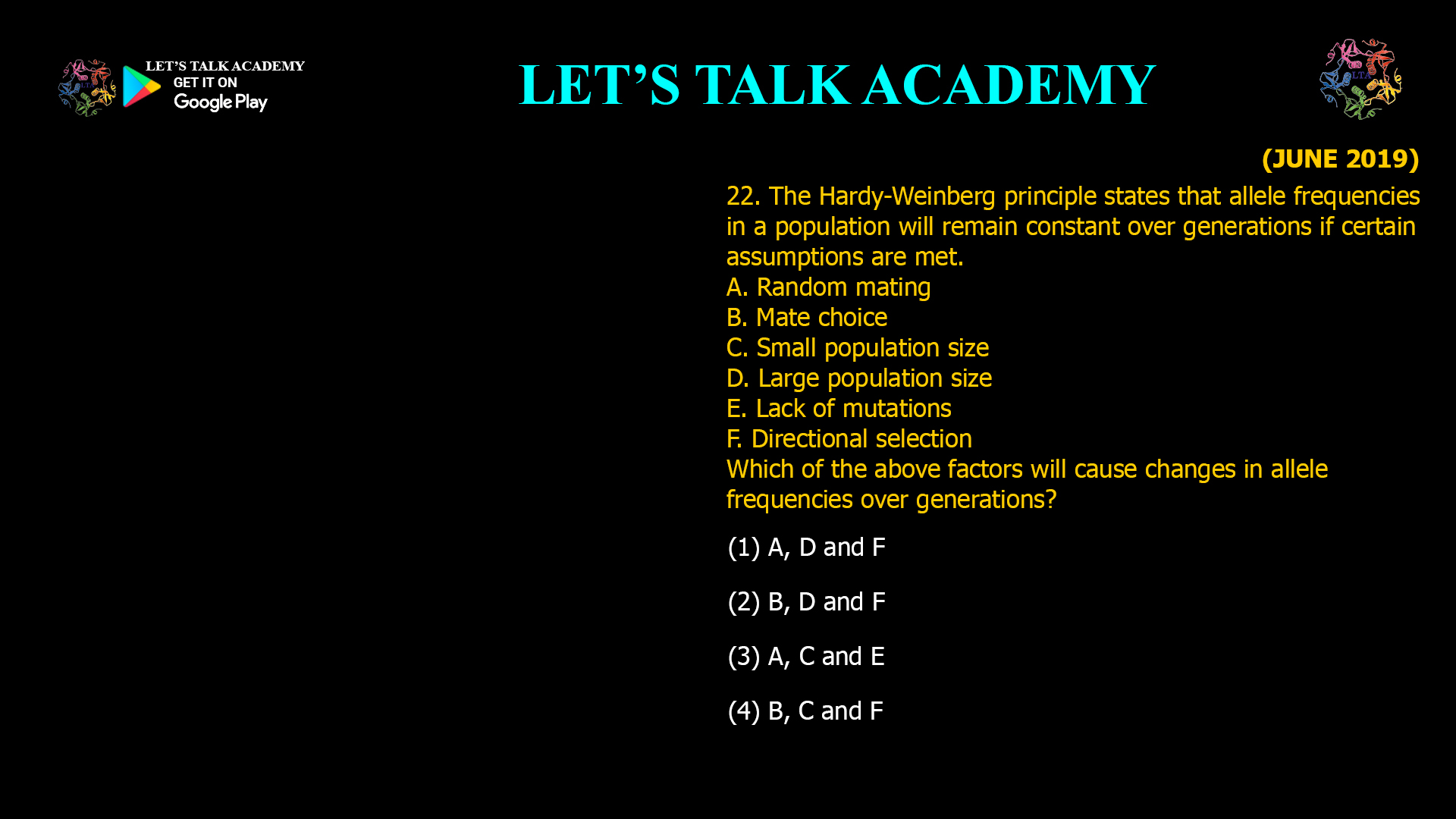- The Hardy-Weinberg principle states that allele frequencies in a population will remain constant over generations if certain assumptions are met.
A. Random mating
B. Mate choice
C. Small population size
D. Large population size
E. Lack of mutations
F. Directional selection
Which of the above factors will cause changes in allele frequencies over generations?
(1) A, D and F (2) B, D and F
(3) A, C and E (4) B, C and FWhich Factors Cause Changes in Allele Frequencies? Understanding Hardy-Weinberg Equilibrium Disruptions
The Hardy-Weinberg principle is a cornerstone of population genetics, stating that allele and genotype frequencies in a population will remain constant from generation to generation if certain assumptions are met. This genetic stability, however, is an idealized state. In real populations, several factors can disrupt equilibrium and cause allele frequencies to change over time.
The Hardy-Weinberg Assumptions
For a population to remain in Hardy-Weinberg equilibrium, it must meet these key conditions:
-
Random mating
-
Large population size
-
No mutation
-
No migration (gene flow)
-
No natural selection
When any of these assumptions are violated, allele frequencies can shift, leading to evolution within the population.
Analyzing the Given Factors
Let’s examine the factors listed in the question:
-
A. Random mating:
This is an assumption of Hardy-Weinberg equilibrium. It does not cause changes in allele frequencies; instead, it helps maintain genetic stability. -
B. Mate choice:
Mate choice is a form of non-random mating. When individuals select mates based on specific traits or preferences, certain alleles may become more or less common in the population. This disrupts equilibrium and causes allele frequencies to change. -
C. Small population size:
Small populations are subject to genetic drift, where random fluctuations can cause alleles to increase or decrease in frequency by chance alone. Genetic drift is a powerful force in small populations and leads to changes in allele frequencies over generations. -
D. Large population size:
A large population size is an assumption of Hardy-Weinberg equilibrium. It minimizes the effects of genetic drift and helps maintain stable allele frequencies. -
E. Lack of mutations:
The absence of mutations supports Hardy-Weinberg equilibrium. Mutations introduce new alleles, but if there are no mutations, allele frequencies remain stable. -
F. Directional selection:
Directional selection is a type of natural selection where one allele is favored over others, leading to a consistent increase or decrease in its frequency. This process directly changes allele frequencies in the population.
Which Factors Cause Changes in Allele Frequencies?
Based on the analysis and the Hardy-Weinberg principle, the factors that cause changes in allele frequencies over generations are:
-
B. Mate choice (non-random mating)
-
C. Small population size (genetic drift)
-
F. Directional selection (natural selection)
Correct Option
From the provided options:
-
(1) A, D and F
-
(2) B, D and F
-
(3) A, C and E
-
(4) B, C and F
The correct answer is (4) B, C and F.
Conclusion
Mate choice, small population size, and directional selection are all factors that disrupt Hardy-Weinberg equilibrium and cause changes in allele frequencies over generations. These evolutionary forces are common in natural populations and are responsible for much of the genetic diversity and evolutionary change observed in nature
-



